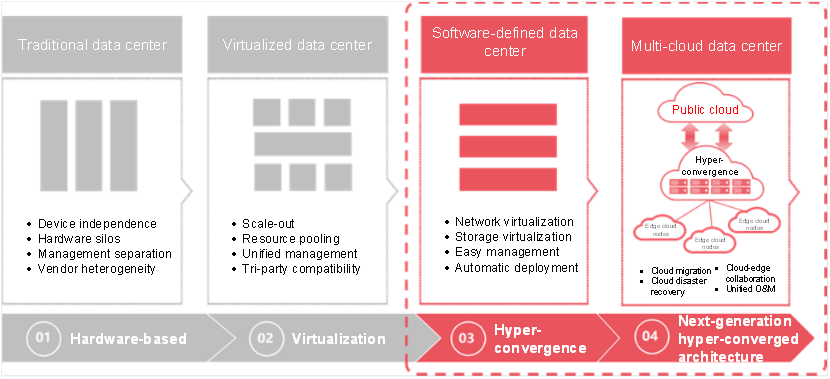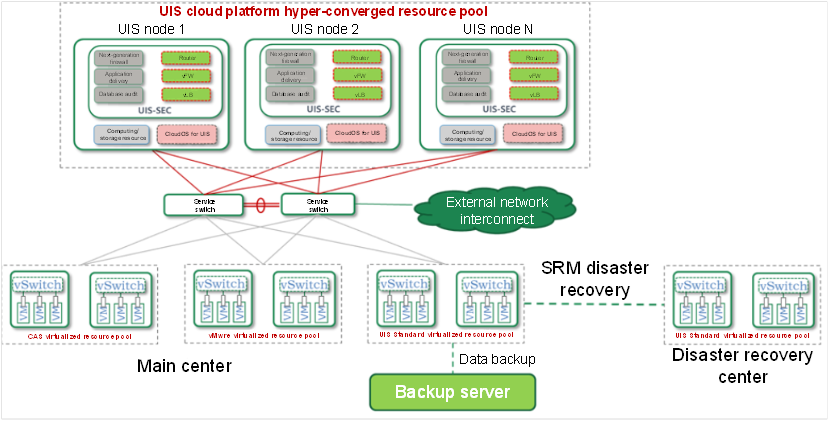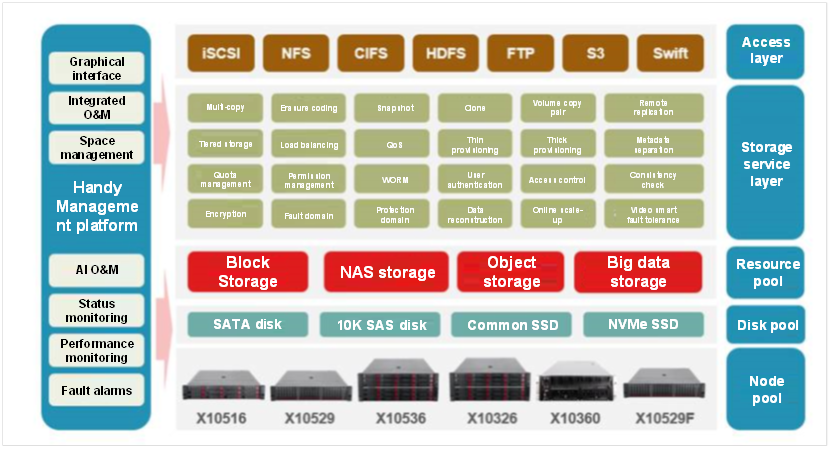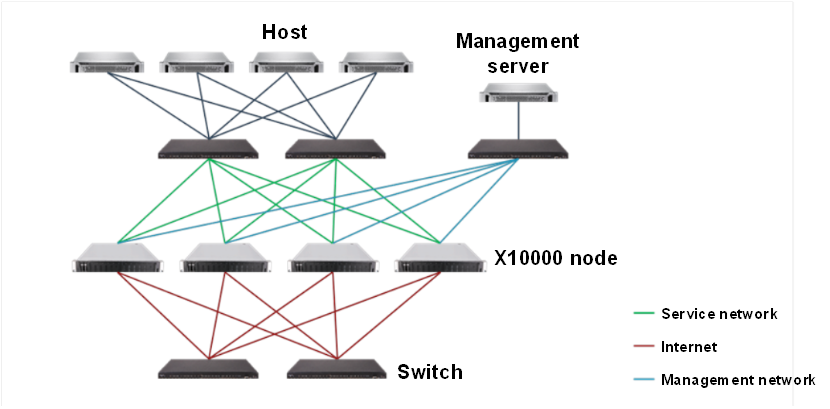Campus Network - Data Center Cloud Network Solution
Demand background
The traditional IT architecture cannot meet users' demands of digital transformation.
Difficult service expansion: The underlying architecture is inflexible and unable to provide corresponding dynamic resources in the face of future service innovation or data growth.
Slow service deployment: Since the entire architecture is complex and there are many types of devices, option design, integration, deployment, and service debugging are difficult, and the service launch takes a long time.
Complex O&M management: Due to various types of devices and inconsistent models, it is difficult to centrally monitor and manage the infrastructure in the data center, resulting in high daily maintenance and management costs.
Low resource utilization: Services are deployed on their servers and built based on the maximum service specifications with less than 15% resource utilization, resulting in serious waste and high investment costs.
Inefficient innovation: In the traditional infrastructure environment, IT departments spend lots of time on device installation, debugging, and O&M, leaving little time to focus on innovative integration of IT and services.
Development trend of data center

Hyper-convergence scenario
UIS cloud platform of small- and medium-sized enterprises cloud scenario + network model of virtual network security:

Solution description:
1. The UIS cloud platform is an externally hyper-converged management platform that integrates cloud resources, cloud services, cloud operation, and cloud O&M. It also provides users with computing and storage resources.
2. The UIS cloud platform manages the UIS Standard Edition, CAS, and VMware virtualization platform.
3. The UIS-SEC component performs virtual network security functions including router, FW, and LB. In the form of NFV, it also performs value-added security functions including next-generation firewall, application delivery, and database auditing.
4. The UIS Standard Edition provides functions including reliability center, disaster recovery and backup, and full flash storage. By enhancing the reliability, performance and computing abilities, disaster recovery and backup, and storage functions, it improves the hyper-convergence ability for supporting key services.
Solution features:
1. Supports the decoupling of the hardware network and security devices for easy elastic expansion.
2. Provides built-in virtual network functions without the need for an SDN controller, as well as virtual security functions in the form of NFV without the need for hardware security devices.
3. The use of resources is highly intensive. It provides cloud platform IAAS cloud services capabilities and virtual network security features with only three UIS servers.
4. Supports heterogeneous virtualized computing resources including CAS, UIS Standard Edition, and VMware.
5. Applies to solutions for the scenarios including small- and medium-sized enterprises, district government clouds, medical clouds, and common colleges and universities.
Distributed storage scenario
X10000 G3 series storage system is a next-generation fully symmetric distributed storage system developed by H3C, which supports block, file, object, and HDFS storage capabilities, as well as the scale-out of up to 2048 nodes and the EB-level capacity under a single namespace. The performance and capacity of the system linearly expand with the increase in the number of nodes. Feature high performance, high scalability, high reliability, and easy management and maintenance, X10000 G3 products are widely used in cloud computing, virtualization, database, file sharing, bill imaging, HPC, archive backup, and other scenarios. The products provide massive storage resource pools for users in various industries such as government, finance, enterprises, operators, radio and television, education, medical care, transportation, and energy.
Compared with scattered storage silos, H3C UniStor X10000 G3 can better meet the storage needs of applications. To better adapt IT services to business goals, distributed resources must be integrated for less but more scalable storage. X10000 G3 supports integration by centralizing data into a single namespace and simplifying management tasks associated with saving, moving and accessing files.
X10000 G3 provides a global namespace that allows infrastructure storage capacity to scale from TB level to EB level, supports high volumes of structured and unstructured data, and supports multiple access protocols including iSCSI, CIFS, NFS, FTP, and S3.
The system architecture of X10000 G3 is as follows:

X10000 G3 supports iSCSI, NFS, CIFS, FTP, S3, Swift, and other protocols, and can provide block, NAS, and object storage services simultaneously and externally. Its cluster network is shown below, mainly including the management network, service network, and storage network.

Management network
It cooperates with Handy components to carry storage cluster management services. As a best practice, it adopts independent networking. It requires low bandwidth, and gigabit bandwidth is optional.
Service network
It connects to the user network and provides shared services. It requires independent networking and 10 gigabit bandwidth. As a best practice, it adopts dual-link redundancy.
Storage network
It carries storage service data (storage front-end network), storage back-end heartbeat packets, data distribution and migration, and data traffic (storage back-end network). It requires independent networking and large bandwidth due to high burst traffic. As a best practice, it adopts 10 gigabit bandwidth and dual link redundancy.


